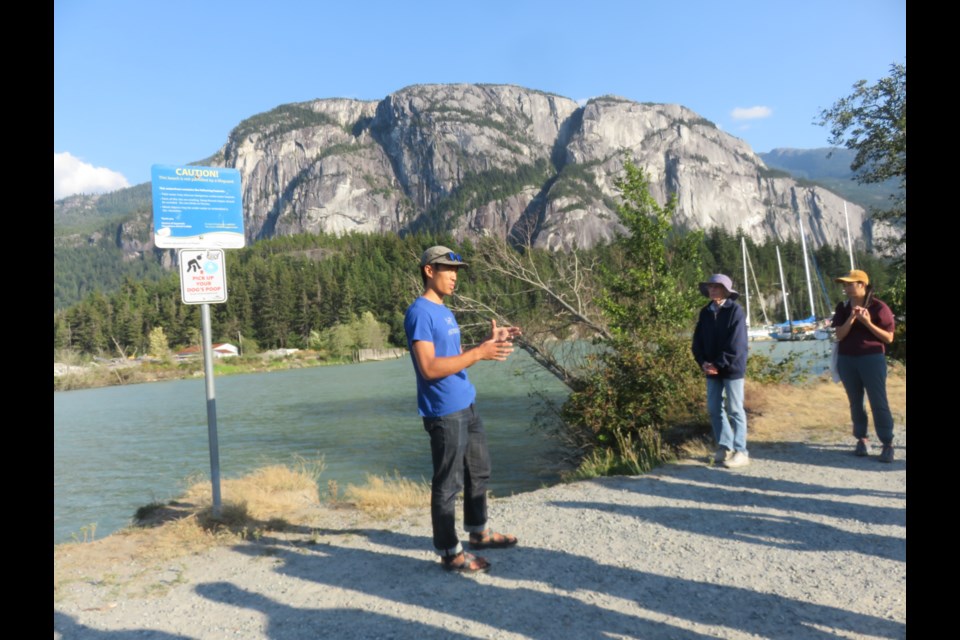In the middle of the tug-of-war between developers and preservationists here in Squamish, is the group, Our�鶹�����Placemaking Society, a non-profit organization committed to enhancing Squamish’s urban public spaces through people-driven projects, education and advocacy.
They’re the folks behind the cheerful, colourful benches and boxes with sayings like “Every flower blooms in its own time.”
In keeping with their mandate, invitedto lead a walk and talk on biodiversity in the region that I attended last Aug. 14.
Chhor has a master of science degree from Carleton University. He is a salmon biologist at the Raincoast Conservation Foundation and is keenly interested in how cities can be better places for both biodiversity and people.
Taking the group to three areas, the Mamquam Blind Channel, a corner on Cleveland Avenue and the estuary, Chhor pointed out that dredging, industry, development and other disturbances have given rise to invasive species like Scotch broom, destroying the habitat of native species.
Another threat to the area is the prediction of rising sea levels potentially threatening coastal flooding.
“A solution, currently in pre-construction, is the X̱wún̓eḵw Park Sea Dike project that aims to help support native biodiversity through the creation of an intertidal salt marsh. The salt marshes will provide food and refuge for a variety of habitat and wildlife,” he said.
At the Cleveland Avenue stop, Chhor spoke of the toxic residue from paved surfaces and tires, as rainwater enters municipal storm drains.
He noted that a recent University of B.C. study found that placing mini gardens by these drains helped remove up to 90% of pollutants from stormwater.
At the estuary stop, Chhor explained that biodiversity describes the number of different species inhabiting a certain ecosystem.
Greater biodiversity creates more resilience and resistance to change, making it harder for an invasive species to colonize.
The 2015 David Suzuki Foundation report declared that Howe Sound watersheds provide between $800 million to $4.7 billion of value to society, illustrating the profitability and importance that biodiversity be protected, restored and functioning well in the future.
“This is why I believe that it’s important that growing cities like �鶹�����concentrate their development in a smaller footprint, using land that has already been impacted by humans instead of sprawling their development,” said Chhor “At the same time, �鶹�����can do everything it can to build livable spaces for native plants and wildlife. This can include pollinator gardens, natural shorelines, protecting urban trees, and encouraging the community stewardship of parks.”
Chhor said he took hope when passing the Community Garden, across from the �鶹�����Public Library.
I did not have the heart to inform him that the garden was only there temporarily as the site had received a development proposal for constructing an eight-story residential building.
(To comment on this development proposal, contact the District of �鶹�����Municipal Hall, ‘[email protected]’ citing RZ00033.)
Check out the for information on current exciting projects.
Melody Wales is a �鶹�����resident and veteran column writer.




